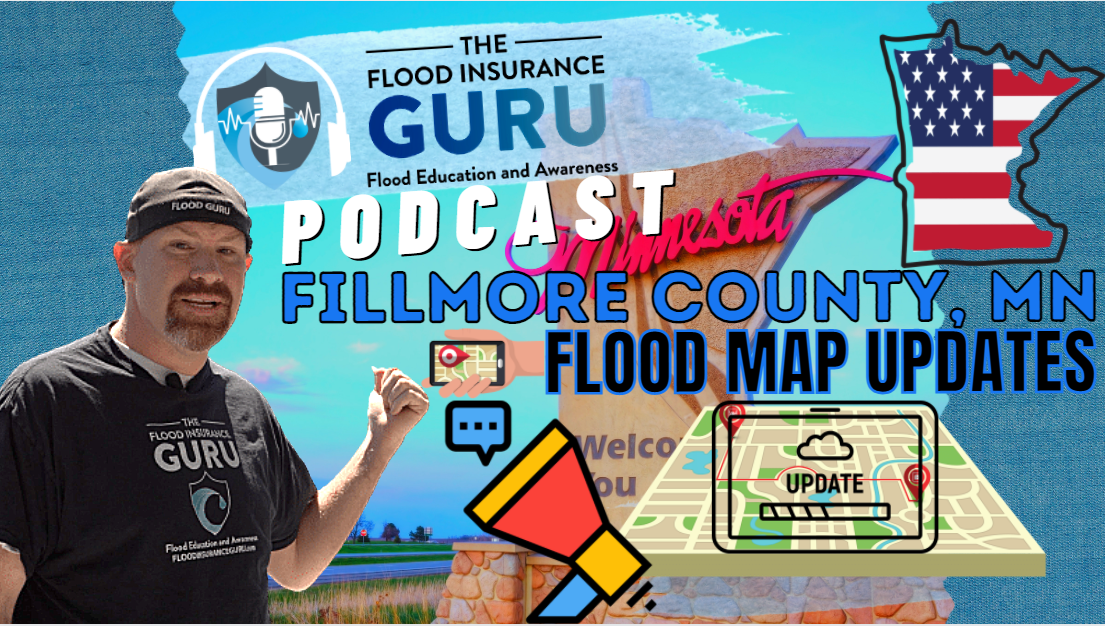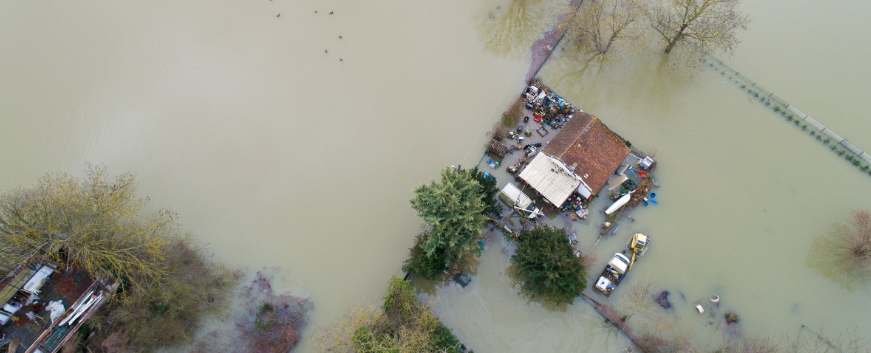The Flood Insurance Guru Podcast Episode 23: Fillmore County Minnesota Flood Map Updates
April 15th, 2019
4 min read
By Chris Greene

In today's episode, we're talking about flood map updates for Fillmore County, Minnesota which took place on August 15, 2019. We'll dive into what cities and areas affected, what the actual impacts of this new flood map are going to bring, and what your flood insurance options are.
We can expect that cities like Preston, Lanesboro, Spring Valley, and Rushford are going to receive most of the impacts from these changes. Flood Insurance Rate Map (FIRM) changes are really important and does take some time before it can be released. A lot of research is done by the Federal Emergency Management Agency (FEMA) on floodplain devolvement, floodplain changes, impacts of snow showers, floodplain management ordinance updates and data, base flood elevation, and water flow on checking the percent chance of flooding in a specific area.

For example, Minnesota is known for its snow in winter and this can actually cause snowmelt in spring which impacts the potential of water formations to be higher than usual.
The Impacts
Now, it's important to note that 700 properties in the county are going to be moved from a low-risk flood zone or low-risk area to a high-risk flood zone. There are also going to be around 650 properties moved from a medium high-risk area to a very high-risk area or the Special Flood Hazard Areas (SFHA). This is basically a negative impact on 7.5% of the residents of these cities. Let's dive deeper into these numbers and discuss why it may be a bad and ugly change for you.

Let's start with the 700 properties being moved from a low-risk flood zone to a high-risk flood zone. When we're talking about these residents, we want to preface this that it's most likely that your mortgage company will require you to get flood insurance once the flood map update takes effect. This is a floodplain regulation standard set by the city hall, city staff, federal, or even state government in order to reduce flood damage to properties.
To paint a picture, imagine the conditions of rivers and lakes are constantly rising because of the spring thaw; this causes the excess water from melting snow from snow showers to seep into the land and flow into bodies of water, and then a couple of inches of rain came down on the city. This effect brings a devastating flood to the affected areas and usually is unpredictable since it's challenging to measure how much the snowmelt affects the bodies of water. This is why some properties are moved into a high-risk flood zone and reasons like the proximity of your house to a body of water became a culprit to this change.

For those being moved into a higher-risk flood zone like the 650 properties listed, it's uglier since it means that there's a higher chance of flooding in that parcel of area compared to other parts of the county. Generally, this could mean that even a small chance of rain can threaten the safety of the properties moved into these areas. This is when the area is considered to be in the 100-year floodplain or the Special Flood Hazard Area (SFHA) wherein there's at least one out of 100 annual chance flood.
It's important to mention that this is just FEMA giving the bigger picture since even your local floodplain manager can give water talks on how flooding can occur with just a small percent chance of precipitation.

Looking at the brighter side of the fence, there are around 200 properties that are being removed from a high-risk flood zone to a low-risk flood zone. This means that the chance of flooding on these properties is lower compared to the previous data and won't be required to carry a flood insurance policy for their property. Although this can really save you a lot of money, we still discourage not getting flood insurance since it's only a low-risk flood area and not a no-risk flood area.
It's important to note that most of the flood claims usually come from low-risk flood zones and there's a lot of possible reasons as to why this is the case. As we covered in our previous episode, a redirection of the natural water flow can bring a major flood to these low-risk areas. You can check on the reasons why a low-risk flood zone can flood by checking out our podcast below:
Flood Insurance Options
Now, let's say you're one of those impacted negatively or the 1350 properties being moved into the high-risk flood zones, you might already be wondering how to move forward on this. Don't panic, we're still going to help you check on your flood insurance options.
The NFIP
First and foremost, you have federal flood insurance through FEMA and the National Flood Insurance Program (NFIP). Now, if you're doing a Federal Housing Administration (FHA) loan, this might be your only option since they recently pushed back on allowing private flood insurance through FHA loan.
Now, the good thing about the NFIP is that they're going to give you some leeway on your first year after being moved into the high-risk zones. One of these leeways is called a newly mapped rates where you'll get the preferred rate for the first year and will start to go up each year after that.

For example, if the flood insurance rate for a preferred flood zone or low-risk flood zone starts at $600, then that's what you're going to pay for on your first year. Then it will change into $700 on the next year and then $800 on the next until you meet the standard flood insurance rate for that high-risk flood zone.
You can also work your property out of the high-risk flood zone through the help of getting an elevation certificate and letter of map amendment showing that your property is above the base flood elevation. Although the elevation certificate isn't required for newly mapped areas, this can still help you in the long run, so you can save your money when you really need one of these.
You can check our podcast on the NFIP to learn more about them below:
The Private Flood
Now, when it comes to the private flood insurance market, it's important to preface this with the knowledge that you will have more private flood insurance options within the market since there are numerous carriers out there. Private flood has different risks that they can choose and underwriting guidelines. In Minnesota, there were also moratoriums done by private flood in late winter and early spring due to all the runoff from the snowmelt.

There are still great things in private flood such as no maximum amount for their coverage on property and contents plus they do provide additional living expenses, loss of use, and replacement costs. You can also consider private flood if you have an expensive property since the NFIP has a maxed amount for their property coverage. Private flood is also known as the quicker option since there's a short waiting period for flood insurance policies to take effect, if not no waiting period at all.
You can check our podcast on the Private Flood insurance to learn more about them below:
At the end of the day, when there's a high chance of flooding, you want to be prepared at all times. Remember, we have an educational background in flood mitigation, so if you have questions on these flood map changes, flood insurance options, or anything about flood insurance, feel free to reach out to us or watch our daily flood education videos over at our YouTube channel by clicking the links below.




